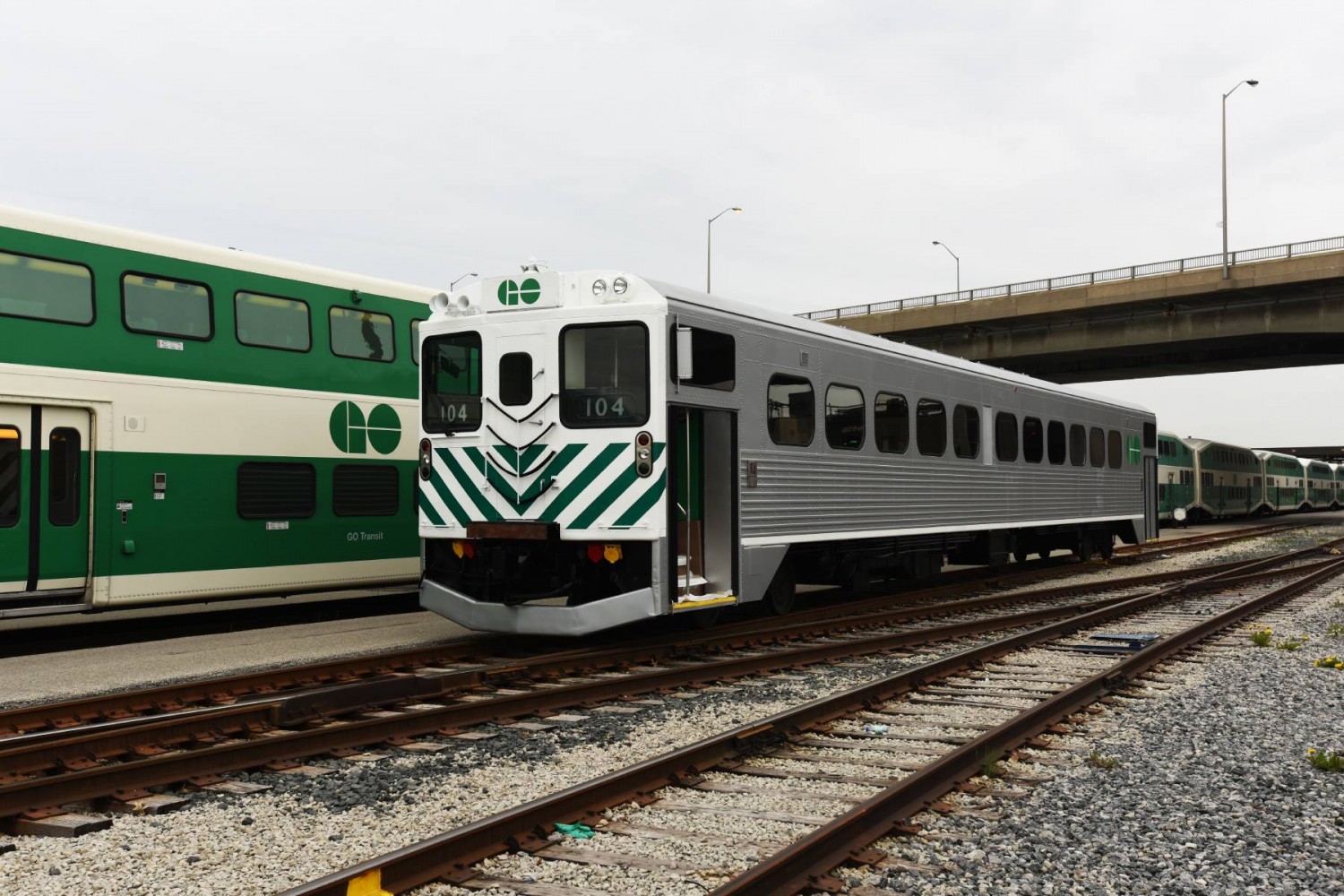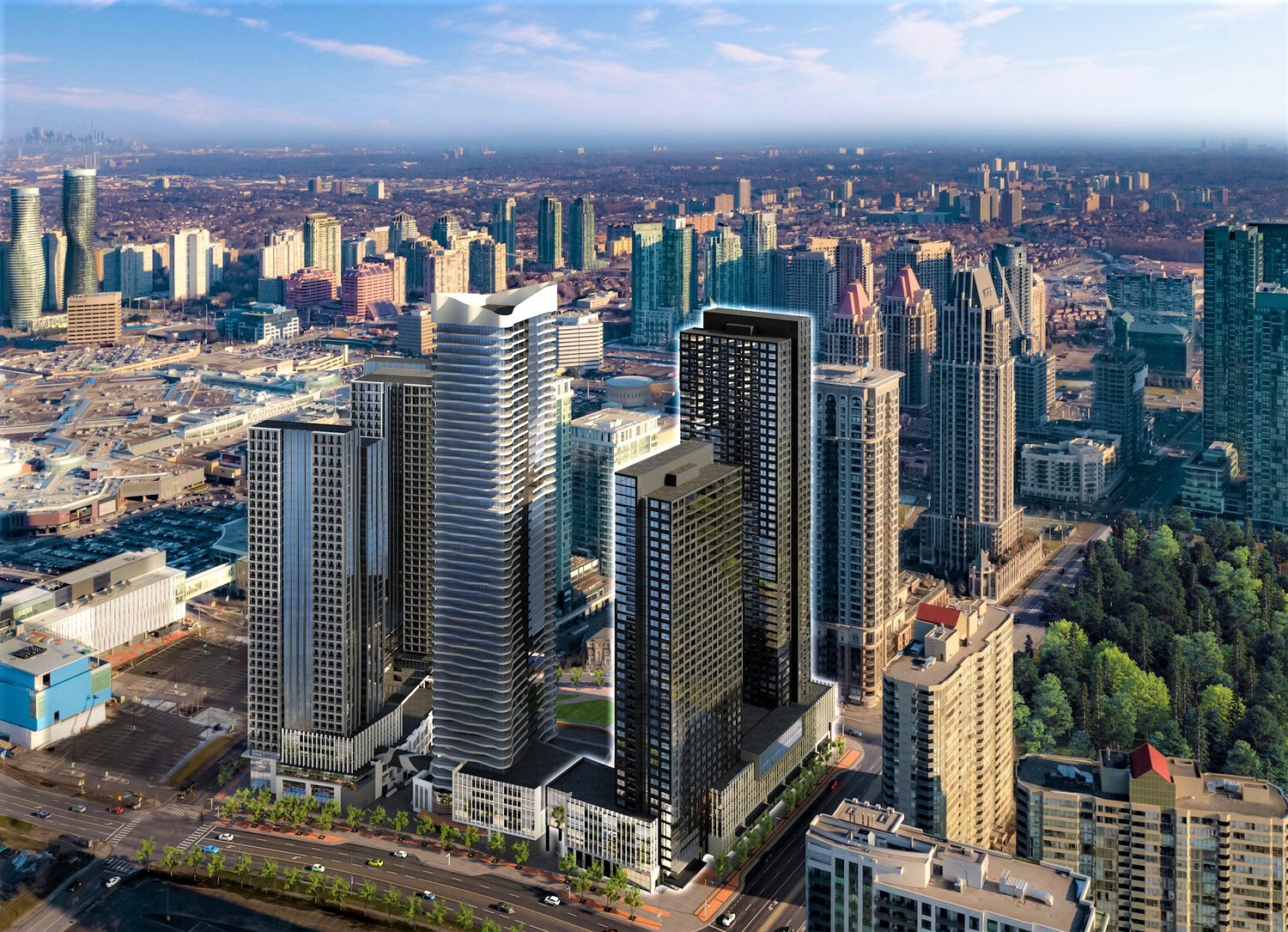
Future smart growth may be found along Peel's transit corridors
It does not matter what train platform you are standing on across the GTA, the incessant ringing of a digital bell means the same thing. It heralds the arrival of one of GO Transit’s diesel engines, dragging behind it a series of double-decker green carriages.
As the trains come to a halt at Union, Bramalea or Port Credit, thousands of commuters look up from their phones and, as Canadians do, politely jostle for seats. As the doors close, they plug in and switch off, shutting out the world until they arrive at their destination. Everyday, people repeat the cycle.

However, the ringing of that bell could soon mean something different than the arrival of another commuter train. It could become an anthem of affordable housing — a ballad for density.
Following the release of A Place To Grow (2019) — the province’s long-term growth plan for the Greater Golden Horseshoe — the Region of Peel has been engaged in a critical decision making process. Planners and policy makers at its headquarters in Bramalea are studying the transit routes that criss-cross Mississauga and Brampton with affordability, density, and smart growth in mind.
Despite their reputation for car-happy planning, both cities feature a fairly high number of transit routes. The Hurontario LRT, breaking ground this year, intersects with the Lakeshore West GO, Milton GO, a planned Dundas BRT, and the Mississauga Transitway. Brampton’s Queen Street has been designated as a rapid transit target by Metrolinx with early plans afoot for BRT, while Kitchener GO, featuring three stops in the city, is on course for two-way, all-day travel.
A map detailing potential Major Transit Station Areas for future smart growth
As unaffordability in Peel increases and Toronto’s housing crisis intensifies, these transit routes and their respective stations offer an avenue to unlock affordability.
The province’s A Place to Grow strategy outlines this potential in detail. It refers to Major Transit Station Areas — the 800 or so metres surrounding stops on rapid transit routes — in the context of new, denser planning with potential for affordable housing. The strategy outlines minimum requirements for these stations, telling regions and single-tier cities to build for more people and jobs. In areas around LRT and BRT stops (Hurontario Street, Highway 403, Dundas Street and Queen Street in Peel), 160 residents and jobs per hectare are required, with 150 per hectare for everything within a 10 minute walk of a GO station.
The strategy will help build the complete communities Mississauga is pushing for in its current Official Plan amendment to “reimagine the mall” and a future outlined in Brampton’s 2040 Vision. But, the plan does allow the province to lower requirements that forward both cities' aims if they prove unattainable.
Now, the Region of Peel is taking the strategy and applying it to its land, which, after certain studies are completed, will open up opportunities for smart growth.
“As part of the Peel 2041 Official Plan Review, the Region initiated the Major Transit Station Area Study in 2019,” a spokesperson told The Pointer. “Also, as part of Peel 2041, the Region is collaborating with the local municipalities to undertake a study to develop an inclusionary zoning (IZ) framework.”
The region is studying inclusionary zoning — a practice that can mandate developers to build market-affordable units, a type of housing that's desperately needed as supply fails to meet the growing demand of thousands priced out of the regular market. Between 2006 and 2016, the average house price in the region rose by more than 90 percent while rental rates shot up 24.2 percent. In the background, the median income increased by just 16.7 percent over the decade. Pressures on the housing market saw the vacancy rate fall from 4.2 percent to 1.4, a number research conducted in 2019 found to be as low as 0.9 percent in Mississauga.

Combined real estate trends in Peel over a 10-year period.
While cities can ask developers to provide a certain number of affordable units with new builds, there are few ways to enforce the policy. In Mississauga, Ward 5 Councillor Carolyn Parrish has spearheaded a movement to negotiate incoming development bids along Hurontario, trading additional height for affordable units. Successful as this can be, it requires a significant time commitment, where inclusionary zoning can tackle the issue more efficiently.
Under the Planning Act in Ontario, developers can only be systematically mandated to provide a certain number of affordable units if the land is classified as a Major Transit Station Area or a Community Planning Permit Area.
The changes afoot in Peel could be just the beginning of the region’s battle against rising unaffordability and homelessness.
Not everyone is excited about the requirement to include affordable units in new builds as a way to address rising unaffordability and the lack of rental stock. Developers resent the requirement, arguing that eventually it makes construction unprofitable.
“Inclusionary zoning is still a hotly debated topic,” Professor Larry Bourne, who teaches an urban planning and affordable housing course at the University of Toronto, told The Pointer. “Some like it, some do not. There is no single best strategy to achieve more affordable housing. Some ask why should certain developers (and thus certain owners or renters) be asked to provide and pay for affordable housing rather than society as a whole.”
“Still it can be used strategically and in particular places to achieve specific goals, but it clearly is not the only or the most effective strategy on its own,” he added.
However, in Peel, developers have had their way for some time and voluntary affordable units have rarely materialized. Oxford Properties’ recent Square One announcement illustrates the lack of developer desire to provide the city with affordable property units. The development is situated on land, owned by Oxford, that is already zoned for unlimited height. The company announced a plan to build 37 towers featuring 18,000 units without a single unit at market affordable or subsidized rates.

A rendering of Oxford's downtown Mississauga plan
Without an incentive or requirement, the developer has simply not played ball.
The Square One District dilemma is indicative of much of the criticism of Bill 108 (More Homes, More Choice) by those in the affordable housing community. Measures within the legislation are targeted at increasing supply in the hopes market forces will create affordability. There is some economic basis for this, but the cost of renting and buying in Peel means targeted steps to relieve housing poverty are necessary now.
The topic was recently discussed at Mississauga’s Planning and Development Committee, with councillors and staff unable to move forward until Peel completes its review of transit stops. A spokesperson for Mississauga confirmed the city is waiting for results from the region, which is due to release its preliminary zoning in March. Upon receipt, the city said it plans to incorporate the zoning into its Official Plan.
Mississauga Mayor Bonnie Crombie said she was in favour of inclusionary zoning policies, while her Brampton counterpart, Patrick Brown, in Ottawa for a conference, did not respond to a request for comment.
As GO trains continue to thunder across the region and bus rapid transit projects spring up, transit systems may now be viewed through a different lens. The region’s current project to redesignate its Major Transit Station Areas offers an opportunity for transit to be something to everyone. If handled right by councillors and city staff, Peel’s transit can change for the better, bringing improved city building to the surrounding urban landscape.
The digital bell of GO trains can sound the arrival of affordable housing paid for by developers, alongside reduced parking and the complete communities Brampton and Mississauga require as the cities prepare for the future.
Email: [email protected]
Twitter @isaaccallan
Tel: 647-561-4879
Submit a correction about this story


